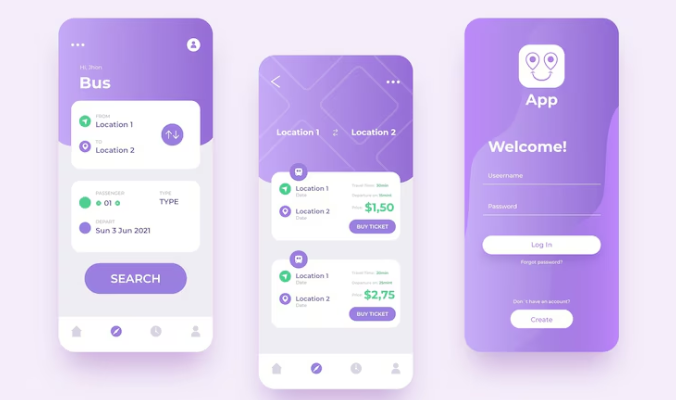
Mobile app development has seen exponential growth over the past decade, transforming from simple applications to sophisticated tools that integrate seamlessly into our daily lives. This article explores the evolution, current trends, and future potential of mobile app development.
The Early Days
In the early 2000s, mobile applications were rudimentary, primarily consisting of basic games and utilities. The introduction of smartphones, particularly the iPhone in 2007, revolutionized the industry. The App Store, launched in 2008, provided a platform for developers to distribute their apps to a global audience, marking the beginning of the mobile app boom. Early apps like Angry Birds, Shazam, and Facebook Mobile set the stage for what was to come. These apps were simple yet effective, demonstrating the potential of mobile technology and sparking widespread interest among developers and consumers alike.
The Rise of Native Apps
Initially, native apps dominated the market. Developed specifically for iOS or Android, these apps offered superior performance and user experience. Developers utilized programming languages like Objective-C and Swift for iOS, and Java and Kotlin for Android. The major advantage of native apps was their ability to fully utilize device features such as GPS, camera, and notifications, providing a seamless and responsive experience. Companies like Instagram, WhatsApp, and Uber became household names, showcasing the power of native development in creating high-quality, feature-rich applications.
Native apps also allowed for greater customization and optimization, enabling developers to tailor the user experience to the specific platform. This platform-specific approach meant that iOS and Android users enjoyed apps that felt natural to their respective environments, further enhancing user satisfaction and engagement. However, this approach also meant higher development costs and longer time-to-market, as separate codebases had to be maintained for each platform.
Cross-Platform Development
As the demand for mobile apps grew, so did the need for efficient development processes. Cross-platform frameworks like React Native, Xamarin, and Flutter emerged, allowing developers to write code once and deploy it across multiple platforms. These frameworks significantly reduced development time and cost, making app development more accessible to smaller companies and individual developers. For example, React Native, developed by Facebook, uses JavaScript to build natively rendered apps, enabling a more streamlined development process.
Cross-platform development also brought about a more unified user experience, as apps could maintain consistent functionality and design across different devices. This approach not only saved time and resources but also allowed developers to reach a broader audience more quickly. However, it was not without its challenges. Performance issues, limited access to native APIs, and potential inconsistencies in user experience were some of the hurdles that developers faced. Despite these challenges, cross-platform development continues to evolve, with frameworks becoming more robust and capable over time.
The Shift to Progressive Web Apps (PWAs)
Progressive Web Apps (PWAs) have recently gained traction as a viable alternative to traditional mobile apps. PWAs are web applications by mobile app development company UK that offer app-like experiences on mobile devices. They are designed to work offline, load quickly, and provide a native-like experience without requiring installation from an app store. PWAs bridge the gap between web and mobile, offering a cost-effective solution for businesses looking to reach a broader audience.
One of the key advantages of PWAs is their ability to work across different platforms and devices, eliminating the need for separate development efforts for each platform. Additionally, PWAs can be updated seamlessly, ensuring that users always have access to the latest features and improvements. Major companies like Twitter, Starbucks, and Pinterest have adopted PWAs, demonstrating their effectiveness in delivering a high-quality user experience. However, PWAs also come with limitations, such as restricted access to certain device features and less visibility in app stores compared to native apps. Despite these limitations, the adoption of PWAs is expected to grow as web technologies continue to advance.
The Impact of Artificial Intelligence and Machine Learning
Artificial Intelligence (AI) and Machine Learning (ML) are transforming mobile app development. AI-powered features such as chatbots, personalized recommendations, and voice recognition are becoming standard in modern apps. ML algorithms enable apps to learn from user behavior and improve over time, providing a more tailored and intuitive user experience. For instance, streaming services like Netflix and Spotify use AI to suggest content based on user preferences, while e-commerce apps like Amazon utilize AI for personalized shopping experiences.
AI and ML also enhance the functionality of mobile apps by enabling advanced features such as image and speech recognition, natural language processing, and predictive analytics. These technologies allow apps to deliver more accurate and relevant information, improving user satisfaction and engagement. Furthermore, AI-driven automation can streamline app development processes, reducing manual coding efforts and increasing efficiency. As AI and ML continue to evolve, their integration into mobile apps will become even more sophisticated, leading to smarter and more capable applications.
The Role of Augmented Reality (AR) and Virtual Reality (VR)
Augmented Reality (AR) and Virtual Reality (VR) are opening new possibilities in mobile app development. AR enhances the real-world environment with digital overlays, while VR immerses users in a completely virtual world. Industries like gaming, education, and retail are leveraging AR and VR to create engaging and interactive experiences, pushing the boundaries of what mobile apps can achieve. For example, games like Pokémon Go and educational apps like Google Expeditions showcase the potential of AR and VR in creating immersive experiences.
In the retail sector, companies like IKEA and Sephora use AR to allow customers to visualize products in their own space or try on virtual makeup, enhancing the shopping experience. AR and VR also have significant potential in fields like healthcare, real estate, and tourism, offering new ways to visualize, interact, and experience content. As AR and VR technologies continue to advance and become more accessible, their impact on mobile app development is expected to grow, leading to more innovative and immersive applications.
Security and Privacy Concerns
As mobile apps handle more personal and sensitive data, security and privacy have become paramount. Developers must adhere to stringent security practices to protect user data from breaches and unauthorized access. Implementing robust encryption, secure authentication, and regular updates are essential steps in ensuring app security. High-profile data breaches and increasing regulatory requirements, such as the General Data Protection Regulation (GDPR), have heightened the focus on app security and privacy.
Developers must also consider the security of third-party libraries and frameworks used in app development, as vulnerabilities in these components can compromise the overall security of the app. Additionally, ensuring secure communication between the app and backend servers, protecting against common threats like SQL injection and cross-site scripting (XSS), and conducting regular security audits are critical measures for maintaining app security. As cyber threats continue to evolve, developers must stay vigilant and proactive in addressing security and privacy concerns.
The Future of Mobile App Development
The future of mobile app development is promising, with several emerging trends poised to shape the industry. The integration of 5G technology will enable faster and more reliable connections, enhancing the performance of mobile apps. The Internet of Things (IoT) will continue to expand, connecting more devices and creating new opportunities for app development. Additionally, advancements in AI, AR, and VR will further enrich the capabilities of mobile apps, making them more intelligent and immersive.
5G technology, with its high-speed and low-latency capabilities, will revolutionize the way mobile apps are developed and used. It will enable more seamless and responsive experiences, particularly for applications that require real-time data processing, such as gaming, video streaming, and augmented reality. The widespread adoption of 5G will also facilitate the growth of IoT, allowing for greater connectivity and interoperability between devices.
The rise of edge computing, which brings data processing closer to the source of data generation, will further enhance the performance and efficiency of mobile apps. Edge computing reduces the reliance on centralized cloud servers, enabling faster data processing and improved app responsiveness. This technology will be particularly beneficial for apps that require real-time analytics, such as autonomous vehicles and smart home devices.
As the mobile app development landscape continues to evolve, developers must stay informed about the latest trends and technologies to remain competitive. Embracing new development frameworks, prioritizing security and privacy, and leveraging emerging technologies like AI, AR, and 5G will be crucial for creating innovative and successful mobile applications. The potential for innovation in mobile app development is limitless, promising exciting and transformative experiences for users worldwide.









